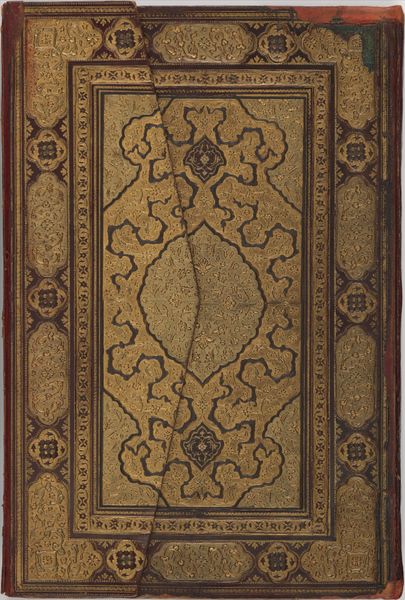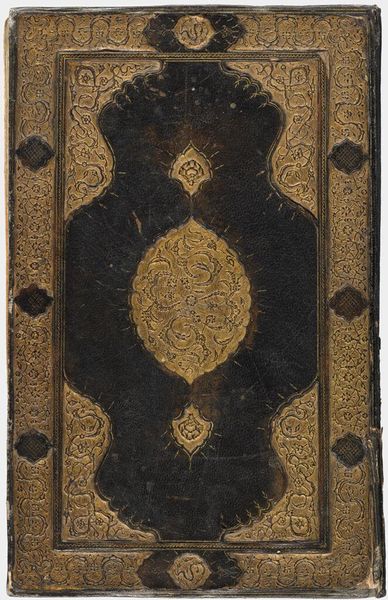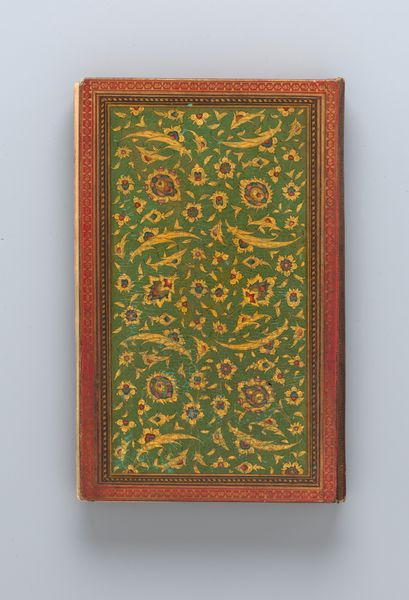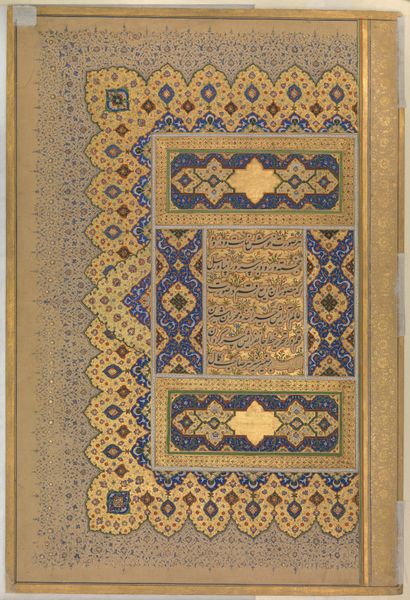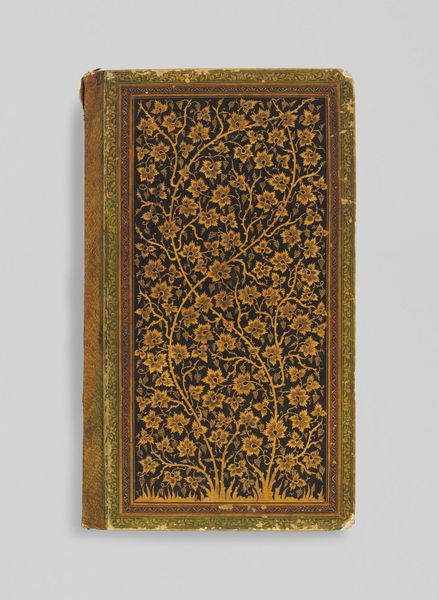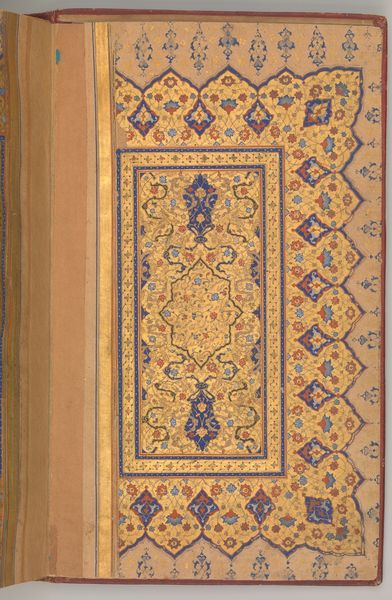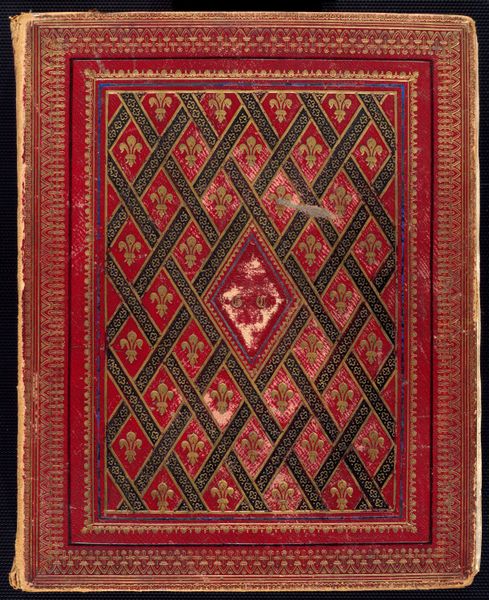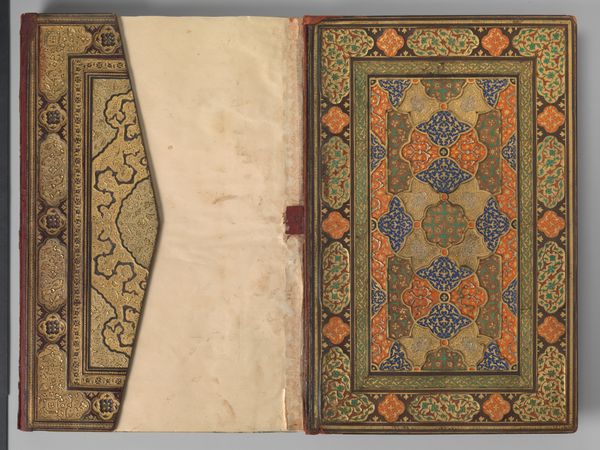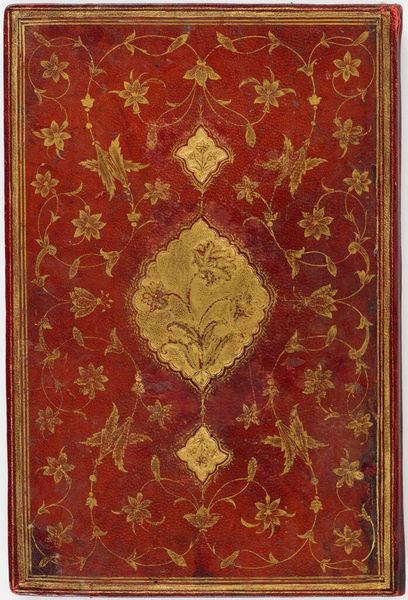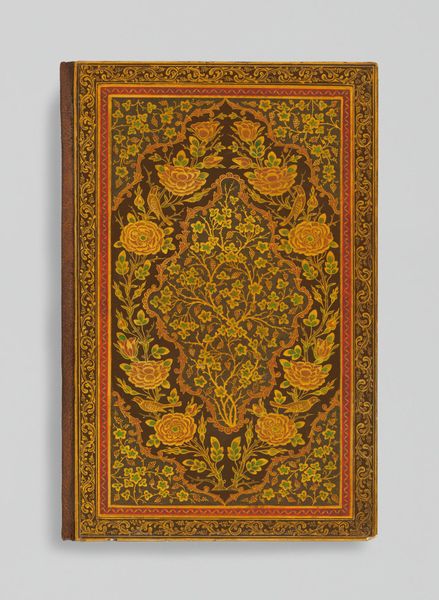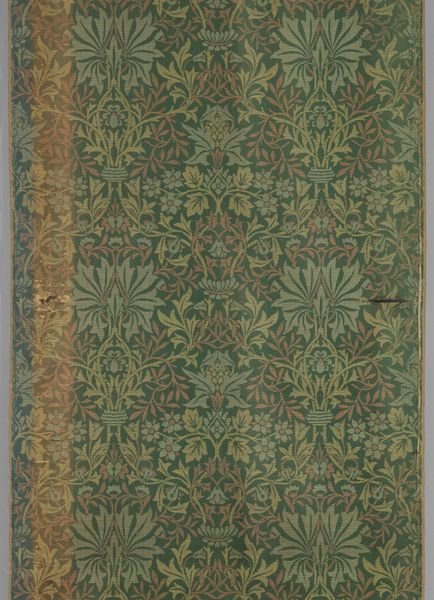
Divan of Hafiz Safavid dynasty (1501–1722), 16th century, dated c. 1540–1550
0:00
0:00
guilding, paper, ink
#
book
#
asian-art
#
guilding
#
paper
#
ink
#
islamic-art
#
miniature
Dimensions: 21.4 × 13 × 2.3 cm (8 7/16 × 5 1/8 × 1 in.)
Copyright: Public Domain
Editor: We’re looking at the “Divan of Hafiz,” a 16th-century book from the Safavid dynasty. It’s made of ink, paper and gilding. It feels like a very precious object. The cover design is exquisite. What can you tell us about its role as a cultural artifact? Curator: This "Divan," a collection of poems by Hafiz, wasn’t merely a book; it was a symbol of Persian cultural identity and intellectual life. Consider how the Safavid dynasty actively cultivated the arts to legitimize its rule and consolidate a sense of national pride. What do you notice about the visual elements of the cover, and how might they relate to the sociopolitical context of the time? Editor: Well, the intricate floral patterns and gilding seem to suggest luxury and refinement. Were these books only for the elite? Curator: Precisely. Manuscript production was often patronized by the court or wealthy individuals, making them markers of social status. Furthermore, the book itself as a symbol. The arts played a huge role in courtly rituals, didacticism, and cultural self-definition, serving as vital visual representations of power and Persian identity. Editor: So, it's more than just pretty; it's loaded with political meaning. How does its display in a museum like the Art Institute of Chicago impact our understanding of it today? Curator: Placing the "Divan" within a Western art museum invites a different audience and set of interpretations. It moves the object into a space of intercultural dialogue and potentially reshapes its meaning. Do you think that it amplifies certain narratives, or maybe obscures others? Editor: I think it both elevates it as an art object and maybe disconnects it from its original social function. I've definitely learned a lot about the role of art in politics. Curator: And understanding that interplay gives us a more comprehensive view of both the artwork and the culture that produced it.
Comments
No comments
Be the first to comment and join the conversation on the ultimate creative platform.
